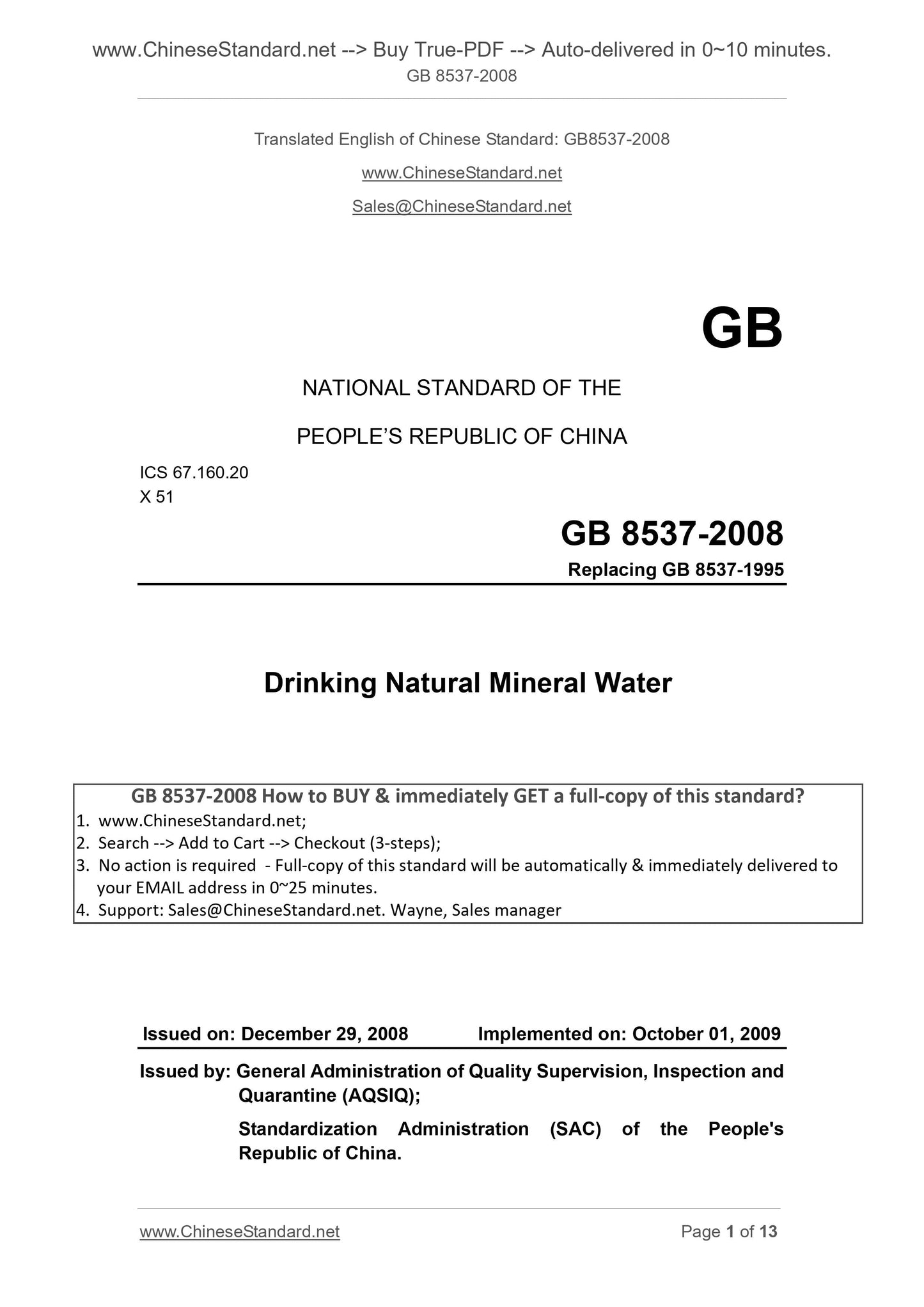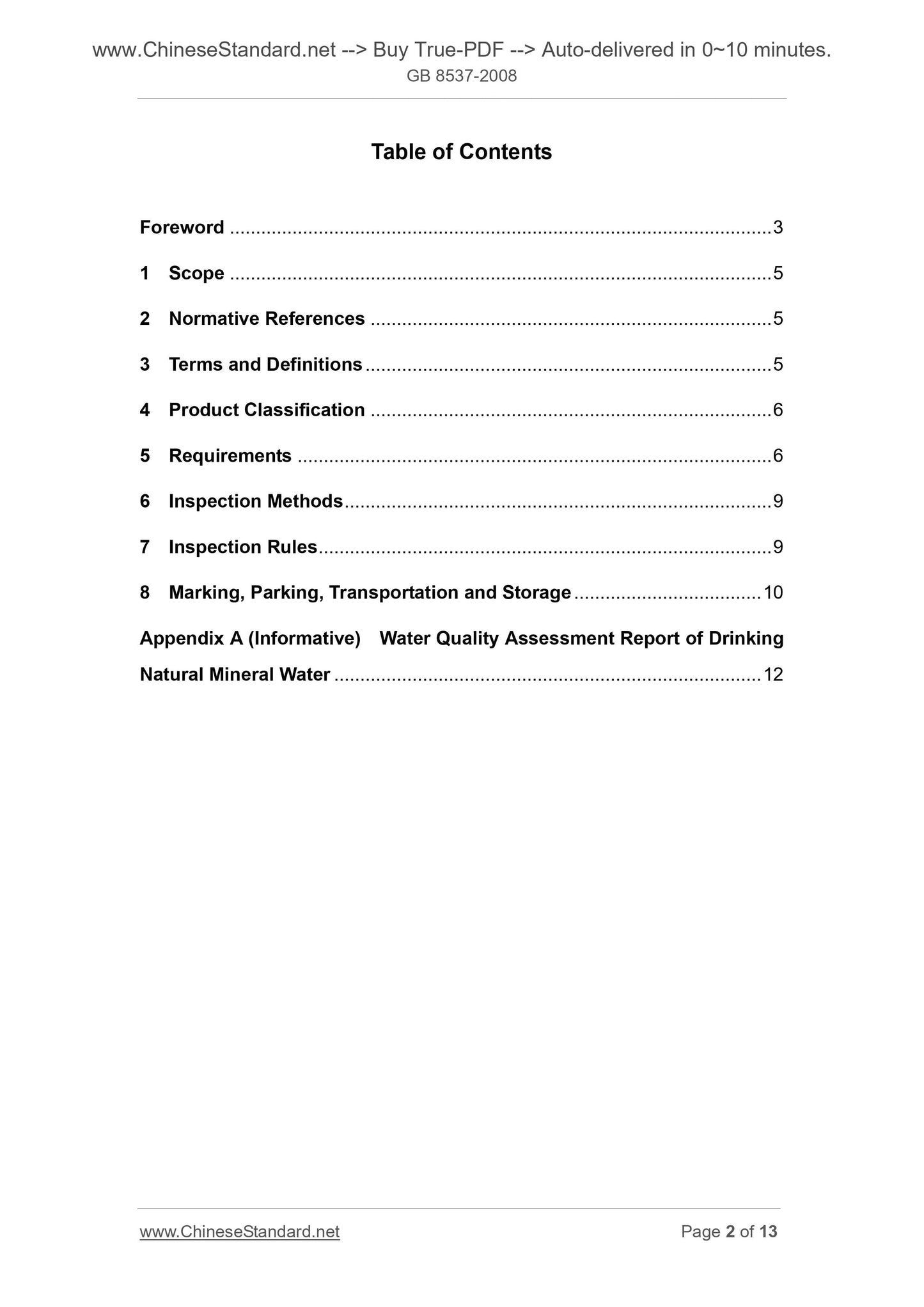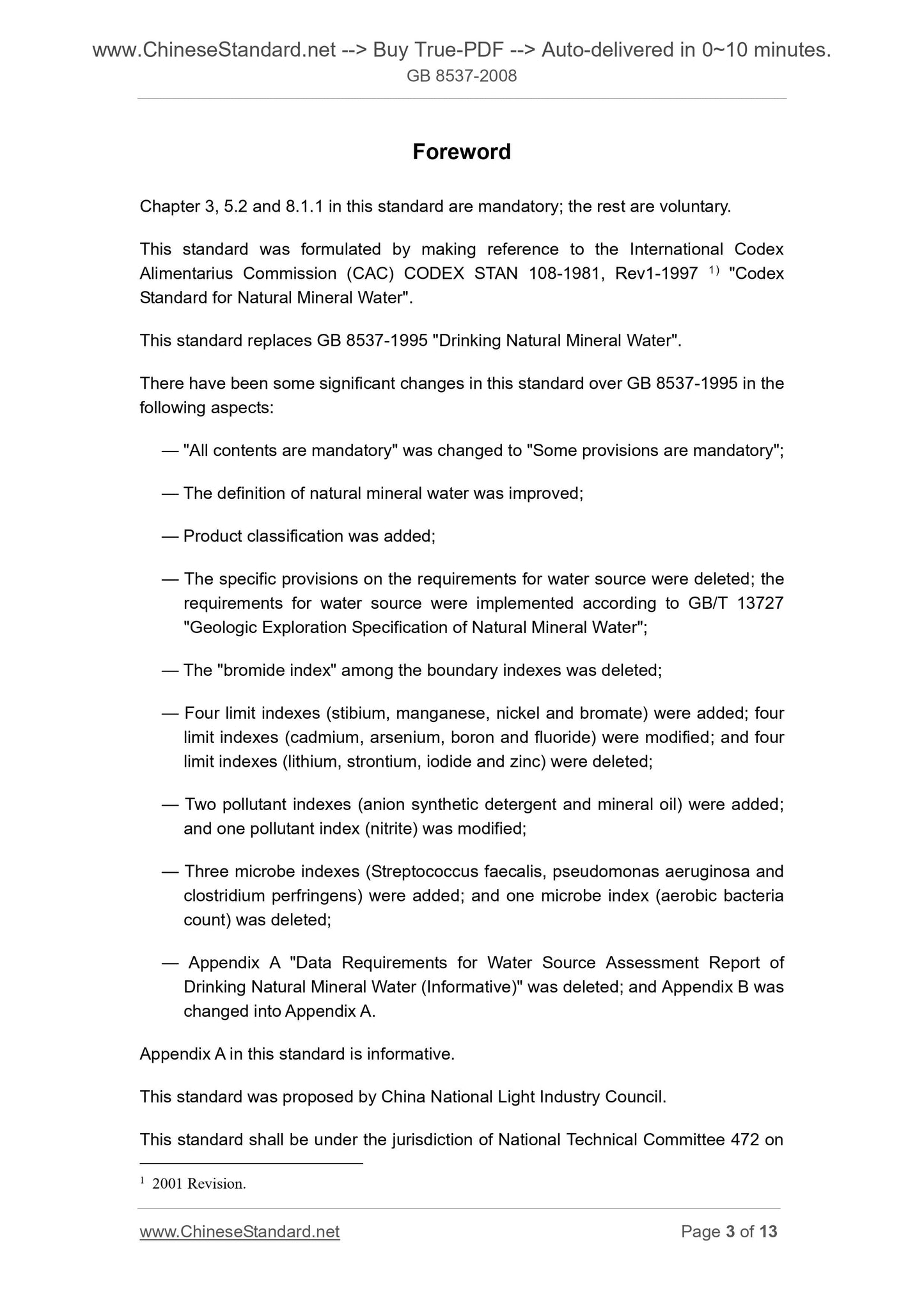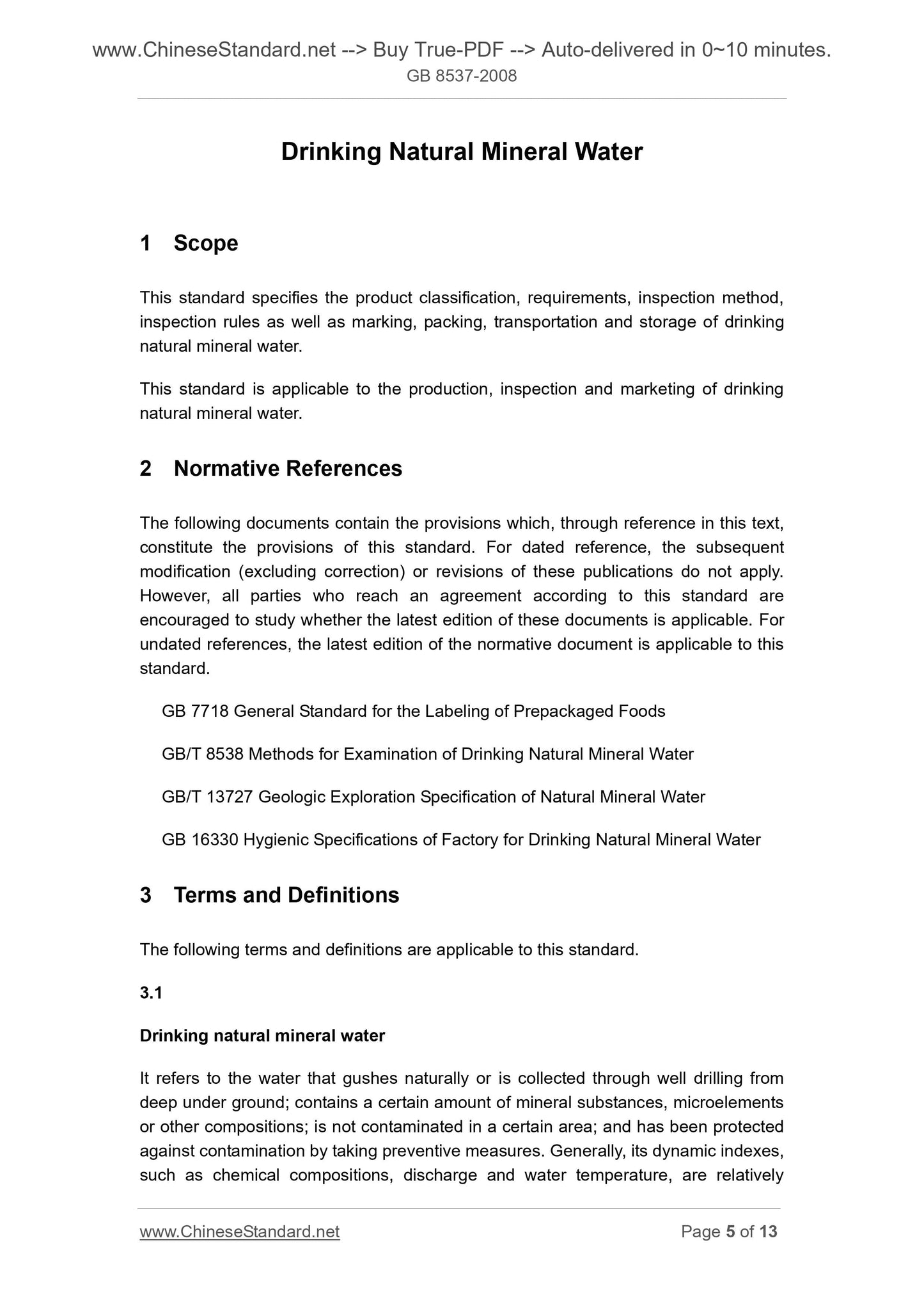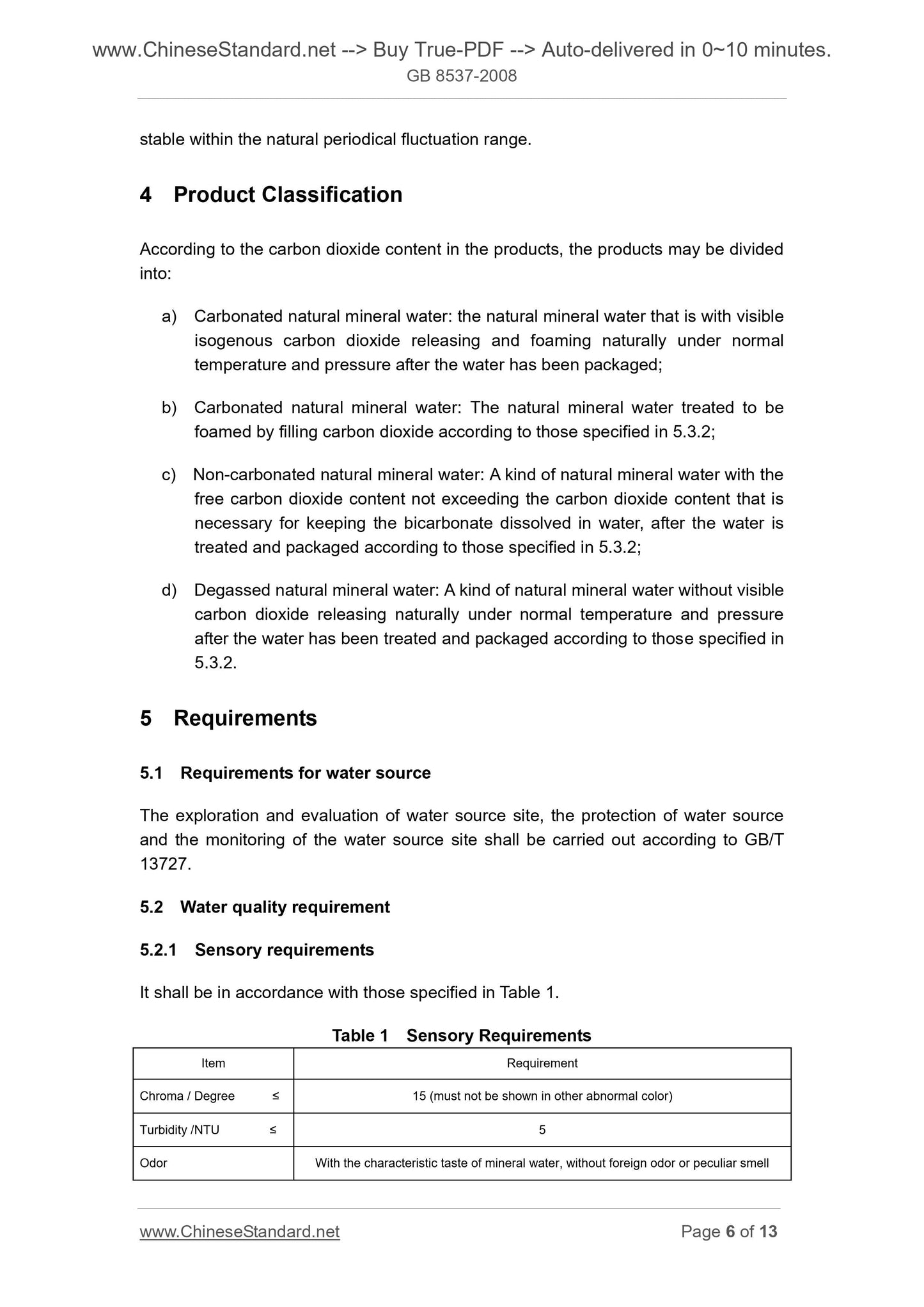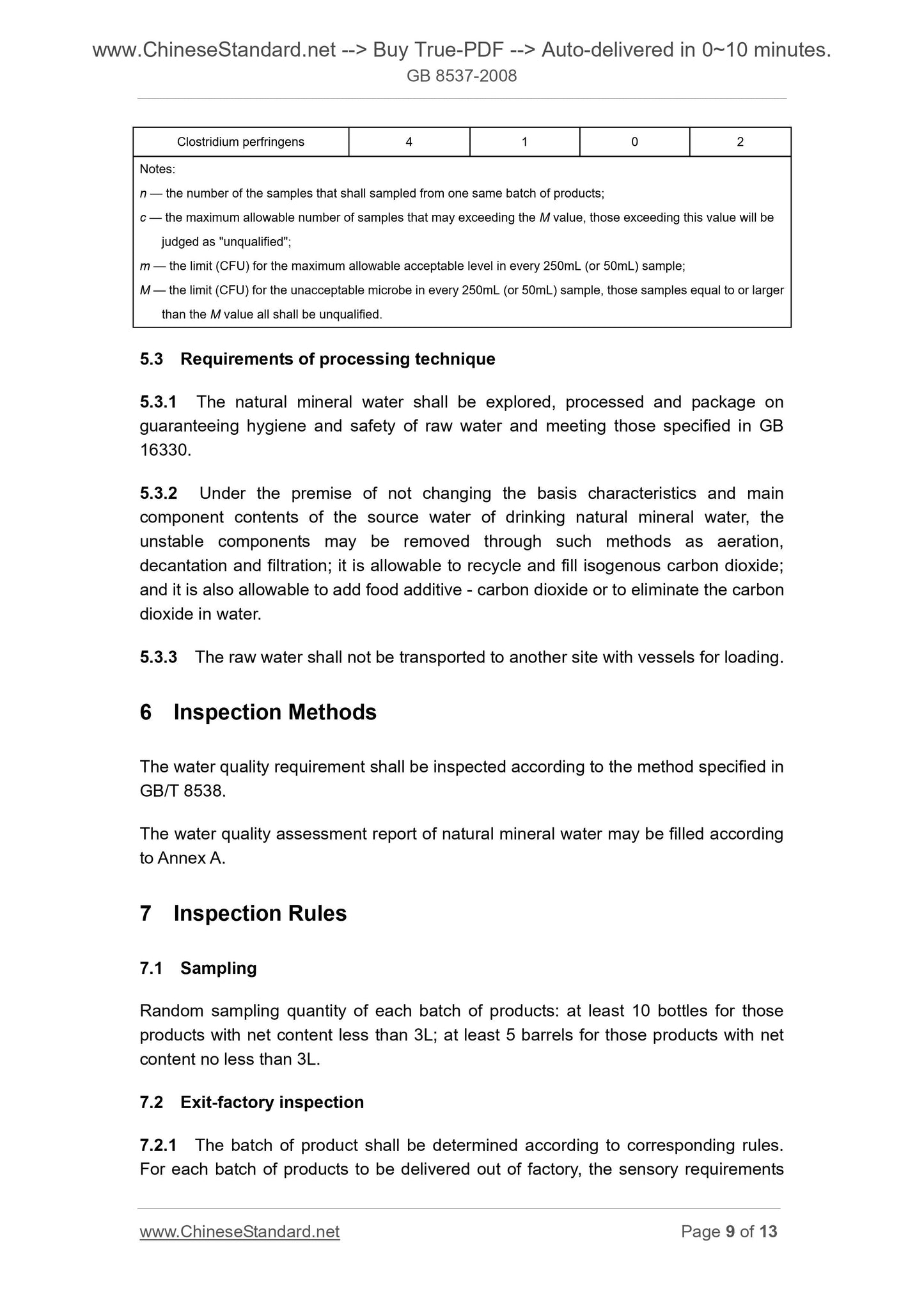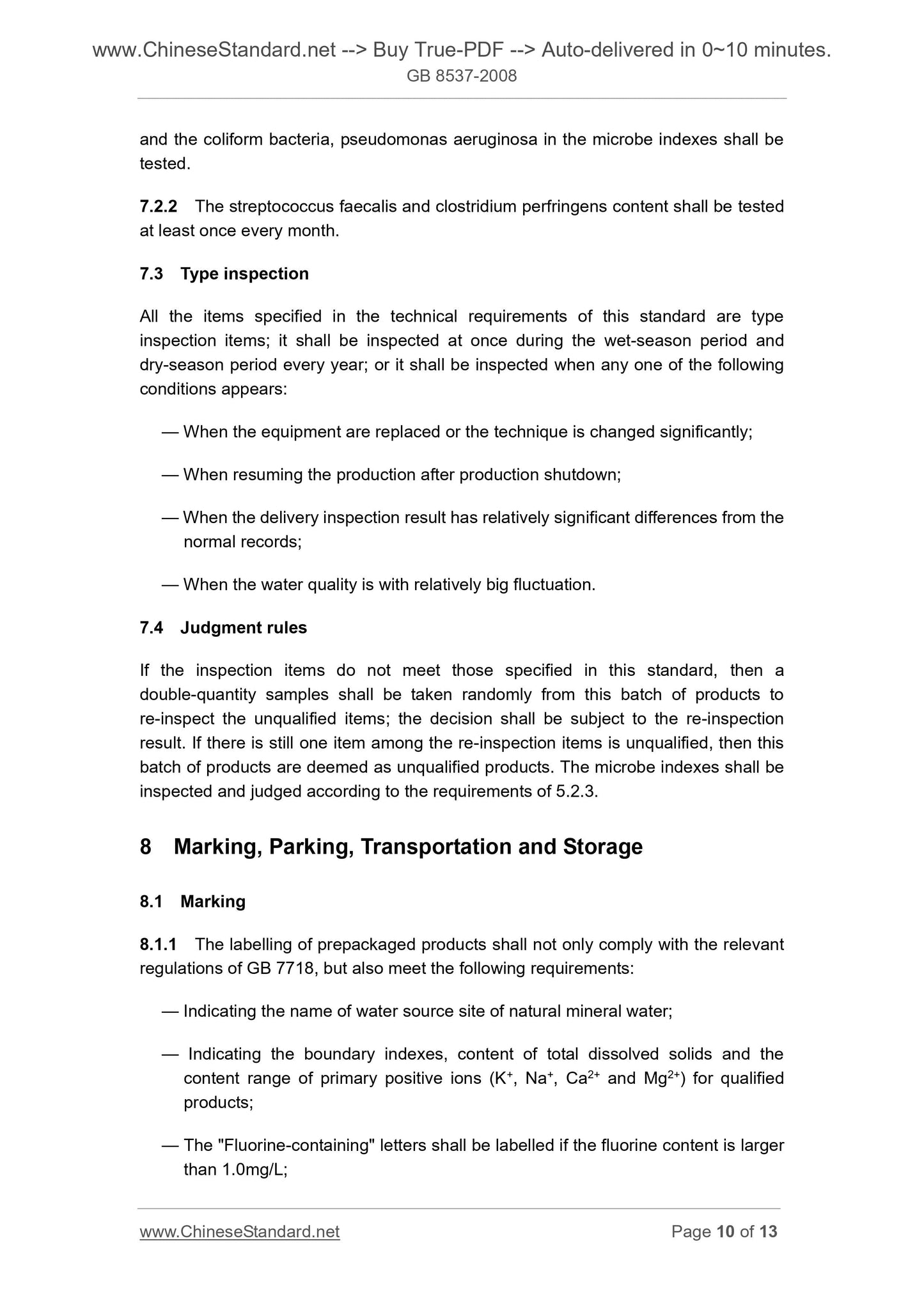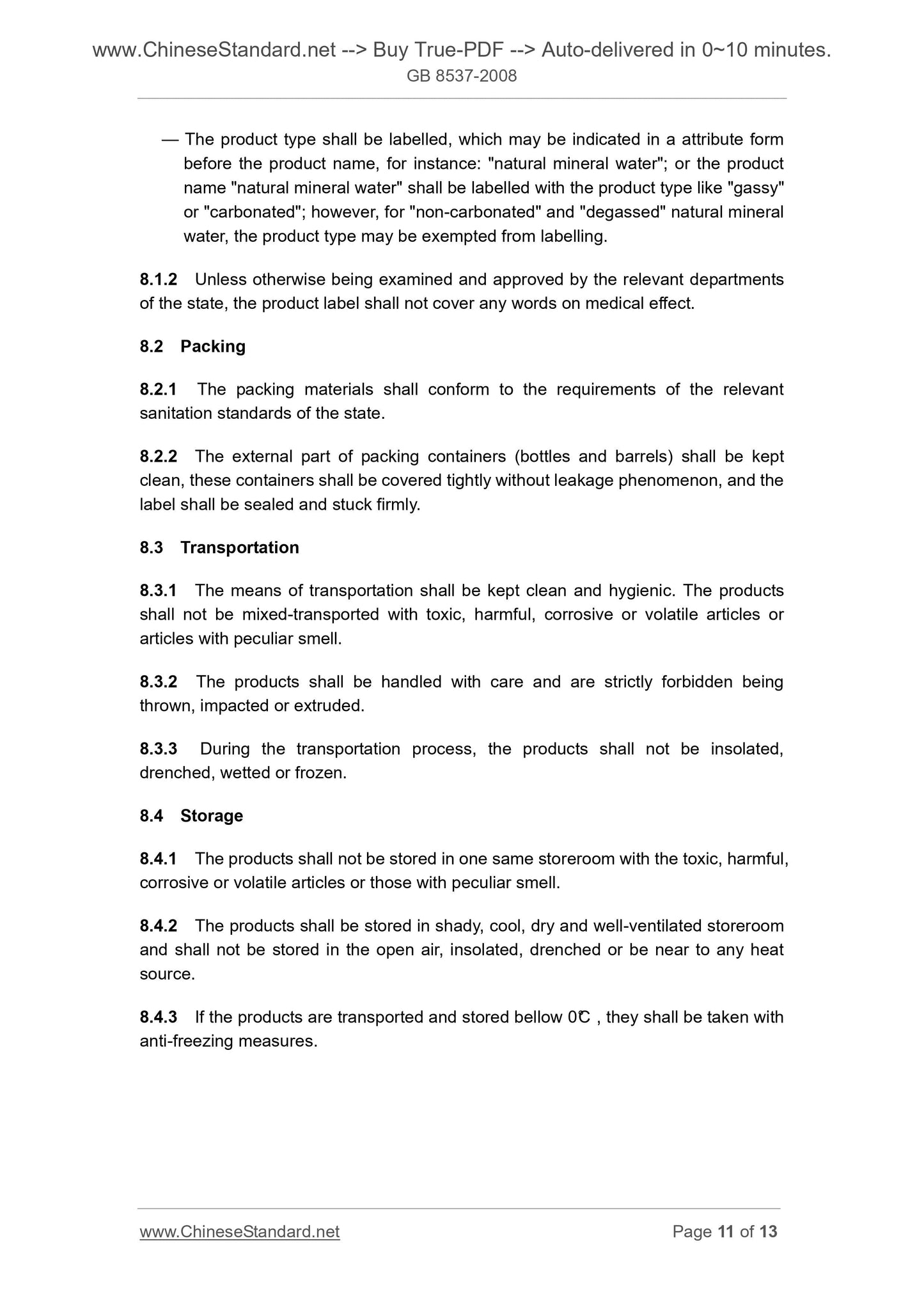1
/
of
8
PayPal, credit cards. Download editable-PDF & invoice in 1 second!
GB 8537-2008 English PDF
GB 8537-2008 English PDF
Regular price
$70.00
Regular price
Sale price
$70.00
Unit price
/
per
Shipping calculated at checkout.
Couldn't load pickup availability
GB 8537-2008: Drinking natural mineral water
Delivery: 9 seconds. Download (and Email) true-PDF + Invoice.Get Quotation: Click GB 8537-2008 (Self-service in 1-minute)
Newer / historical versions: GB 8537-2008
Preview True-PDF
Scope
This standard specifies the product classification, requirements, inspection method,inspection rules as well as marking, packing, transportation and storage of drinking
natural mineral water.
This standard is applicable to the production, inspection and marketing of drinking
natural mineral water.
Basic Data
| Standard ID | GB 8537-2008 (GB8537-2008) |
| Description (Translated English) | Drinking natural mineral water |
| Sector / Industry | National Standard |
| Classification of Chinese Standard | X51 |
| Classification of International Standard | 67.160.20 |
| Word Count Estimation | 9,999 |
| Date of Issue | 2008-12-29 |
| Date of Implementation | 2009-10-01 |
| Older Standard (superseded by this standard) | GB 8537-1995 |
| Quoted Standard | GB 7718; GB/T 8538; GB/T 13727; GB 16330 |
| Regulation (derived from) | Announcement of Newly Approved National Standards No. 21 of 2008 (No. 134 overall) |
| Issuing agency(ies) | General Administration of Quality Supervision, Inspection and Quarantine of the People's Republic of China, Standardization Administration of the People's Republic of China |
| Summary | This Chinese standard specifies the drinking natural mineral water product classification, requirements, test methods, inspection rules and signs, packaging, transport and storage. This standard applies to drinking natural mineral water production, inspection and sales. |
Share
